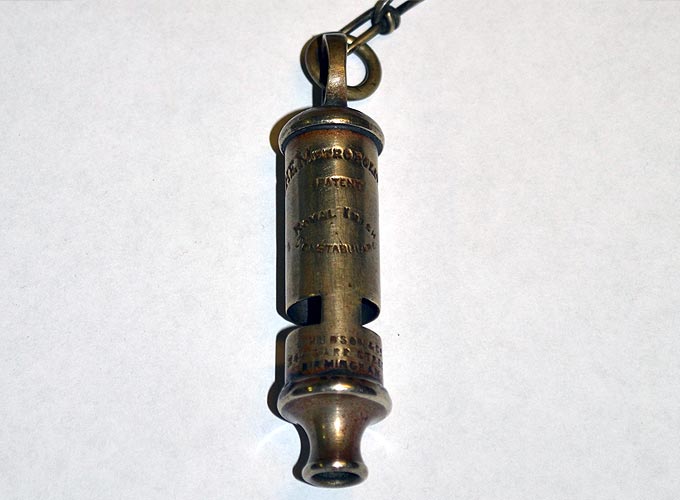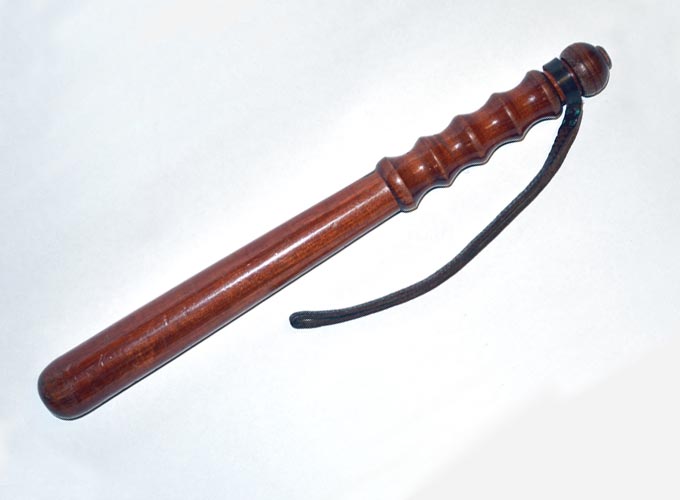Description
This Royal Irish Constabulary (RIC) baton was made from hardwood and had a leather strap which wrapped around the wrist. The baton and whistle were essential pieces of RIC patrol equipment. The baton was carried in a leather case which was attached to the constable’s belt. Initially carried on special duties, the baton replaced the sword bayonet as the standard weapon for patrol duty. A whistle was carried in the top left pocket of the frock coat and was used to summon assistance while on patrol.
According to the Code of Regulations, patrolling was essential for "the prevention and detection of crime, the protection of life and property, and the preservation of the public peace". Constables had to carry out daily foot patrols of their sub-district in all weathers while officers rode or drove their route. Patrolling gave the men an opportunity to engage in "friendly conversation" and acquire an "accurate knowledge of all persons and places in the sub-district”. Day patrols usually consisted of one man armed with a baton, night patrols required at least two men, sometimes with revolvers. On ordinary patrols, constables had to walk at a pace of 1.5 miles per hour. On conference patrols, men from neighbouring barracks met at a prearranged time and place to share information. Although batons were not popular with the men, the Royal Ulster Constabulary continued to carry them; on their belt until the 1950s and then in truncheon pockets.



